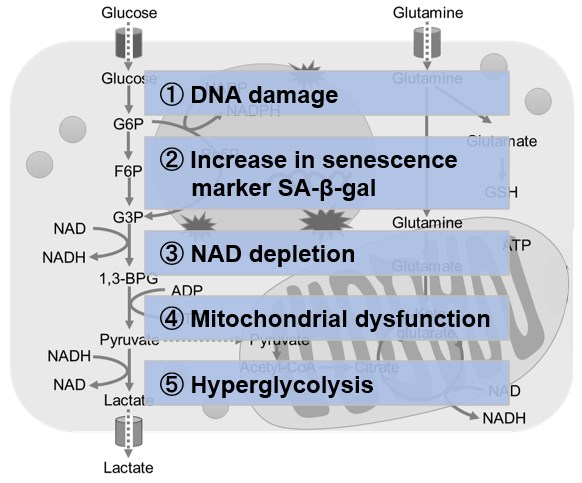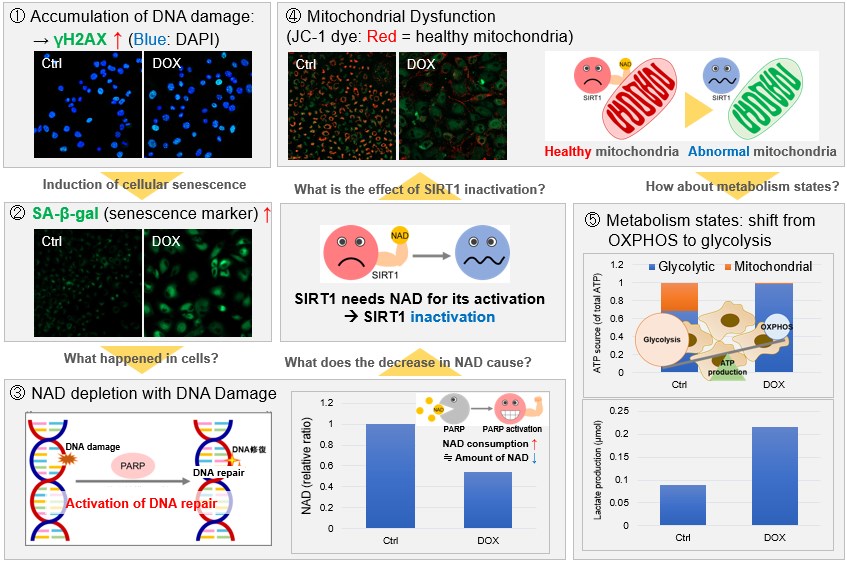Senescent Cell Accumulation and Immune Evasion in Aging [Mar. 25, 2025]
Previous Science Note
| Senescent cells have emerged as central drivers of age-related diseases, including cancer, neurodegenerative disorders, metabolic syndromes, and cardiovascular dysfunction. This Science Note introduces recent advances in our understanding of how senescent cells accumulate, how they evade the immune system and how they contribute to disease pathology. | ||||||||||||||||||||||||
|
SGLT2 inhibition eliminates senescent cells and alleviates pathological aging (Nature Aging, 2024) Highlighted technique: In this study, a matrigel transplantation model was used to evaluate the senolytic effects of the SGLT2 inhibitor canagliflozin. Senescent cells were transplanted subcutaneously into mice together with matrigel and the reduction of these cells was assessed after drug treatment. The results showed that canagliflozin enhanced the immune-mediated clearance of senescent cells. Related technique Cellular Senescence Detection (as used in this study), Glucose Uptake Assay |
||||||||||||||||||||||||
|
The efficacy of chemotherapy is limited by intratumoral senescent cells expressing PD-L2 (Nature Cancer, 2024) Highlighted technique: To investigate the role of PD-L2 in the persistence of senescent tumour cells, the authors used a chemotherapy-treated mouse tumour model and assessed senescent cells by p21 immunostaining and SA-β-gal staining. Related technique Cellular Senescence Detection |
||||||||||||||||||||||||
|
Senescent-like microglia limit remyelination through the senescence associated secretory phenotype (Nature Communications, 2024) Highlighted technique: In this study, to investigate the relationship between remyelination capacity and senescent cells, the researchers used INK-ATTAC mice, in which administration of the compound AP20187 selectively induces apoptosis in p16-positive senescent cells, allowing evaluation of the effects of senescent cell clearance in vivo. Related technique Apoptosis Plate Assay |
||||||||||||||||||||||||
Related Techniques (click to open/close)
|
||||||||||||||||||||||||
Application Note (click to open/close)
|
||||||||||||||||||||||||
|
|
NAD(+) levels decline during the aging process, causing defects in nuclear and mitochondrial functions and resulting in many age-associated pathologies*. Here, we try to redemonstrate this phenomenon in the doxorubicin (DOX)-induced cellular senescence model with a comprehensive analysis of our products. *S. Imai, et al., Trends Cell Biol, 2014, 24, 464-471
|
|
|
|

















